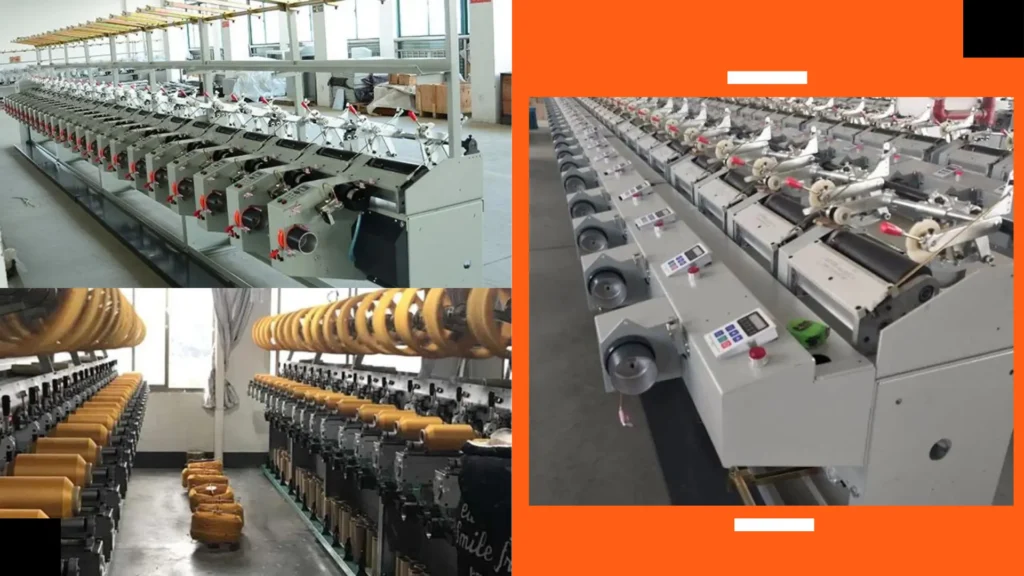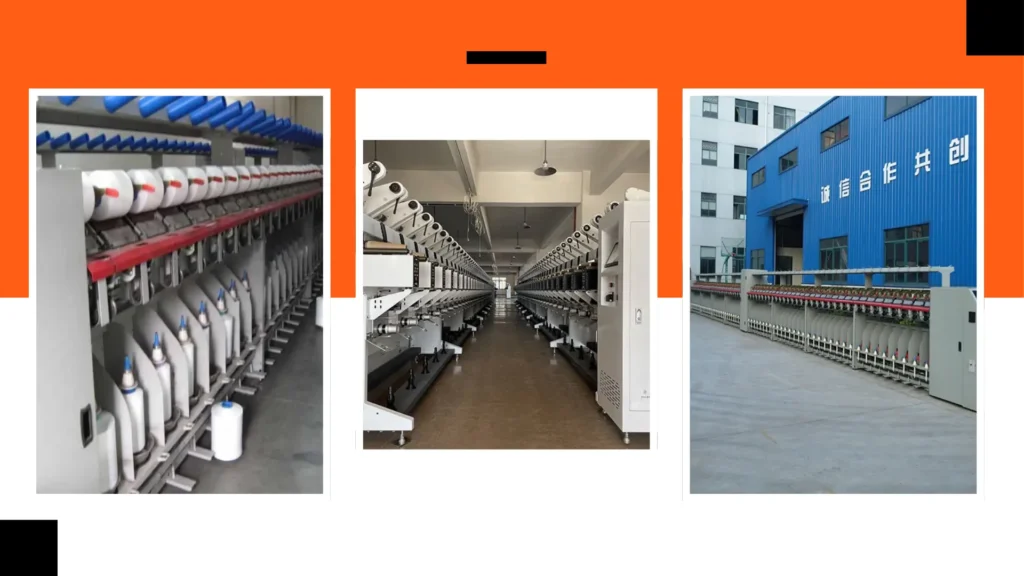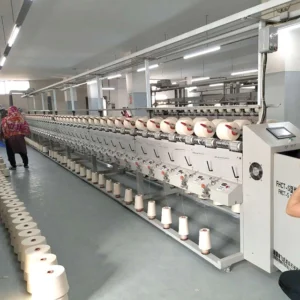Understanding the environmental impact of textile manufacturing is crucial for both sustainability and regulatory compliance.
A carbon footprint audit helps textile factories assess their greenhouse gas emissions and identify opportunities for improvement.
This article provides a straightforward guide to conducting a carbon footprint audit in a textile factory, making the process accessible for manufacturers seeking to enhance their sustainability efforts.
What Is a Carbon Footprint Audit?
A carbon footprint audit measures the total greenhouse gas emissions produced directly and indirectly by an organization.
In textile manufacturing, this includes emissions from energy use, transportation, waste disposal, and raw material production.
Such audits provide a clear picture of the environmental impact and help set measurable targets for improvement.
Importance of a Carbon Footprint Audit
Conducting a carbon footprint audit is vital for understanding the environmental impact of a textile factory’s operations.
It serves as a foundation for developing strategies to reduce emissions and improve sustainability efforts.
Furthermore, it allows organizations to communicate their environmental initiatives clearly to stakeholders and customers alike.
Key Components of a Carbon Footprint
The audit typically covers three scopes:
Scope 1 refers to direct emissions from owned or controlled sources; Scope 2 encompasses indirect emissions from the generation of purchased electricity; and Scope 3 includes all other indirect emissions, such as those from the supply chain and product end-of-life.
Each scope presents unique challenges and opportunities for improvements in emission reductions.
Also Read:
- How to Ensure Compliance with Global Sustainability Standards in Textile Manufacturing
- How to Ensure Compliance with Global Sustainability Standards in Textile Manufacturing
Why Conduct a Carbon Footprint Audit?
Regulatory Compliance
As governments tighten regulations on carbon emissions, conducting an audit ensures compliance with relevant laws and helps avoid potential penalties.
Staying ahead of regulations can also enhance a factory’s reputation.
Additionally, proactive compliance can result in incentives and support from governmental and environmental organizations.
Identifying Improvement Opportunities
A carbon footprint audit reveals areas where emissions can be reduced, leading to cost savings and improved operational efficiency.
Manufacturers will find that many sustainable practices can also enhance productivity.
This process not only drives innovation but also fosters a culture of responsibility and environmental stewardship within the organization.
Enhancing Brand Image
Consumers are increasingly conscious of sustainability and prefer to support brands that take actionable steps to reduce their environmental impact.
A thorough audit can help demonstrate a factory’s commitment to sustainability and consequently boost consumer trust.
This improved brand image can lead to greater customer loyalty and market differentiation in a competitive landscape.
How to Prepare for a Carbon Footprint Audit?
Gathering the Necessary Data
Before beginning the audit, collect data on energy usage, materials, waste, transportation, and employee commuting. Accurate data collection forms the backbone of a reliable audit.
Additionally, ensuring that data is collected consistently will improve the reliability of comparisons over time and help identify trends in emissions.
Involving Key Stakeholders
Engaging stakeholders from various departments, including operations, supply chain, and finance, fosters collaboration and ensures all relevant perspectives are considered during the audit process.
This inclusive approach not only enhances the accuracy of the audit but also promotes a sense of ownership and accountability among team members.
Furthermore, cross-departmental collaboration can lead to innovative solutions and improved sustainability practices.
Setting Clear Goals
Determine the objectives of the audit, whether it’s compliance, improvement, or branding.
Clear goals will guide the audit process and make the findings more actionable. Moreover, communicating these objectives to all involved can increase motivation and focus across the team.
Setting measurable targets also allows for tracking progress and demonstrating success over time.
What Are the Steps to Conduct a Carbon Footprint Audit?
Step 1: Define the Audit Boundaries
Establish the boundaries of the audit by determining which facilities, operations, and activities will be included. This focus will help in providing a comprehensive view of the factory’s emissions.
Clearly defined boundaries will prevent any omissions and ensure that the audit addresses all relevant contributors to the carbon footprint.
It also aids in aligning stakeholders’ expectations regarding the audit’s scope and results.
Step 2: Collect Data
Gather data on energy consumption, waste management, transport logistics, and sourcing.
This data will help quantify emissions and identify their sources across the defined boundaries.
Additionally, involving staff in the data collection process can highlight areas of inefficiency that may not have been immediately apparent.
Consistent monitoring of data collection practices can also provide valuable insights for future audits and sustainability initiatives.
Step 3: Calculate Emissions
Use established methodologies and emissions factors to calculate the greenhouse gas emissions associated with each activity.
This step involves converting data into equivalent carbon dioxide emissions to assess the total carbon footprint.
Collaboration with experts in carbon accounting can enhance the accuracy of these calculations and ensure adherence to standardized methodologies.
Additionally, keeping abreast of the latest emissions factors and guidelines can improve the reliability of the audit results.
Step 4: Analyze and Interpret Results
Examine the results to identify major sources of emissions, trends, and patterns.
Understanding these components will inform decisions for reduction and enhance future sustainability strategies.
By comparing results against industry benchmarks, organizations can gain valuable insights into their performance relative to peers.
Furthermore, a thorough analysis will help in prioritizing actions to maximize emission reductions and achieve operational efficiencies.
How to Develop an Action Plan Post-Audit?
Identifying Key Emission Reduction Strategies
Based on the audit findings, pinpoint strategies that can effectively reduce emissions.
This might include energy efficiency improvements, waste reduction practices, and changes in transportation logistics.
Additionally, involving employees in brainstorming sessions can lead to innovative solutions tailored to the specific operations of the factory.
As these strategies are identified, it’s essential to prioritize them based on potential impact and feasibility for implementation.
Setting Measurable Targets
Establish clear and measurable targets for emission reductions. This will provide a framework for tracking progress and holding the organization accountable to its sustainability goals.
Setting both short-term and long-term targets ensures that the organization stays focused while also allowing flexibility for scaling efforts as needed.
Regular reviews of these targets will help identify areas for adjustment and celebrate milestones achieved along the way.
Implementing Continuous Monitoring
Develop a system for ongoing monitoring of emissions to track improvements over time.
Regular assessment will help maintain accountability and ensure that the factory remains committed to its sustainability objectives.
Utilizing technology such as IoT sensors can enhance data collection accuracy and real-time analysis of emissions.
Furthermore, engaging employees in monitoring efforts can foster a culture of sustainability throughout the organization.
What Tools Can Assist in Conducting a Carbon Footprint Audit?
Carbon Footprint Calculation Software
Utilizing software solutions designed for carbon footprint assessments can streamline data collection and analysis.
These tools often come equipped with databases of emissions factors and automated calculation features.
Moreover, many of these software solutions offer user-friendly interfaces that simplify the process for teams unfamiliar with carbon accounting.
Customizable reports generated by the software can also enhance communication of findings to stakeholders.
Industry Guidelines and Standards
Referencing established guidelines, such as those from the Greenhouse Gas Protocol or ISO 14064, provides a framework for conducting the audit and ensures that the process aligns with industry best practices.
Adhering to these standards not only enhances the credibility of the audit but also helps identify relevant benchmarks for comparison.
Furthermore, staying up-to-date with evolving guidelines can support continuous improvement in sustainability practices.
Training and Workshops
Engaging in training and workshops on sustainability can deepen the understanding of carbon footprint assessments.
These educational opportunities often provide insights into the latest tools and methodologies.
Additionally, they can cultivate a sense of community among professionals in the field, facilitating knowledge sharing and collaboration.
Investing in employee training can also empower staff to take ownership of sustainability initiatives within the organization.
What Challenges May Arise During the Audit Process?
Data Collection Issues
Gathering accurate and comprehensive data can be challenging, especially in large operations with multiple stakeholders.
Ensuring collaboration and communication among departments can mitigate these issues.
Additionally, creating centralized data repositories and clearly defined data collection protocols can streamline the process and enhance data integrity.
Resistance to Change
Employees may resist changes identified during the audit process.
Addressing these concerns through education and clear communication about the benefits of sustainability can help ease resistance.
Encouraging employee involvement in the decision-making process can also foster a sense of ownership and make them more receptive to new initiatives.
Complexity of Emission Factors
Emissions calculations can be complicated due to varying emission factors across different materials and processes.
Providing sufficient training and resources can simplify this complexity, allowing staff to confidently conduct accurate assessments.
Moreover, developing easy-to-use reference guides can assist employees in quickly understanding and applying the correct emission factors during calculations.
How to Communicate Findings and Achievements?
Creating a Comprehensive Report
Compile all audit findings into a detailed report that outlines methodologies, data interpretations, and recommendations.
A clear and thorough report will facilitate understanding among stakeholders and guide decision-making. Including visual aids, such as charts and graphs, can enhance the report’s accessibility and engagement for various audiences.
Sharing Results with Stakeholders
Transparency is key; sharing the audit results with employees, customers, and partners builds trust.
It allows all parties to see the company’s commitment to sustainability and helps engage them in future initiatives.
Hosting feedback sessions after sharing the results can foster dialogue and allow stakeholders to express their thoughts and suggestions.
Using Social Media and Marketing
Promoting the audit findings and sustainability efforts on social media and marketing channels highlights the company’s dedication to reducing its carbon footprint.
This visibility can attract eco-conscious consumers and enhance brand loyalty.
Additionally, storytelling around the sustainability journey can make the initiatives more relatable and inspire others to support the cause.
Conclusion
Conducting a carbon footprint audit is an essential step for textile manufacturers aiming to improve sustainability and comply with evolving regulations.
By systematically evaluating their greenhouse gas emissions, factories can identify opportunities for emission reductions and operational efficiencies.
With ongoing commitment and clear communication, textile manufacturers can enhance their sustainability practices and contribute positively to the environment.
By addressing each step of the audit process with clarity and determination, companies not only adhere to necessary standards but also position themselves as leaders in an increasingly eco-aware market.











